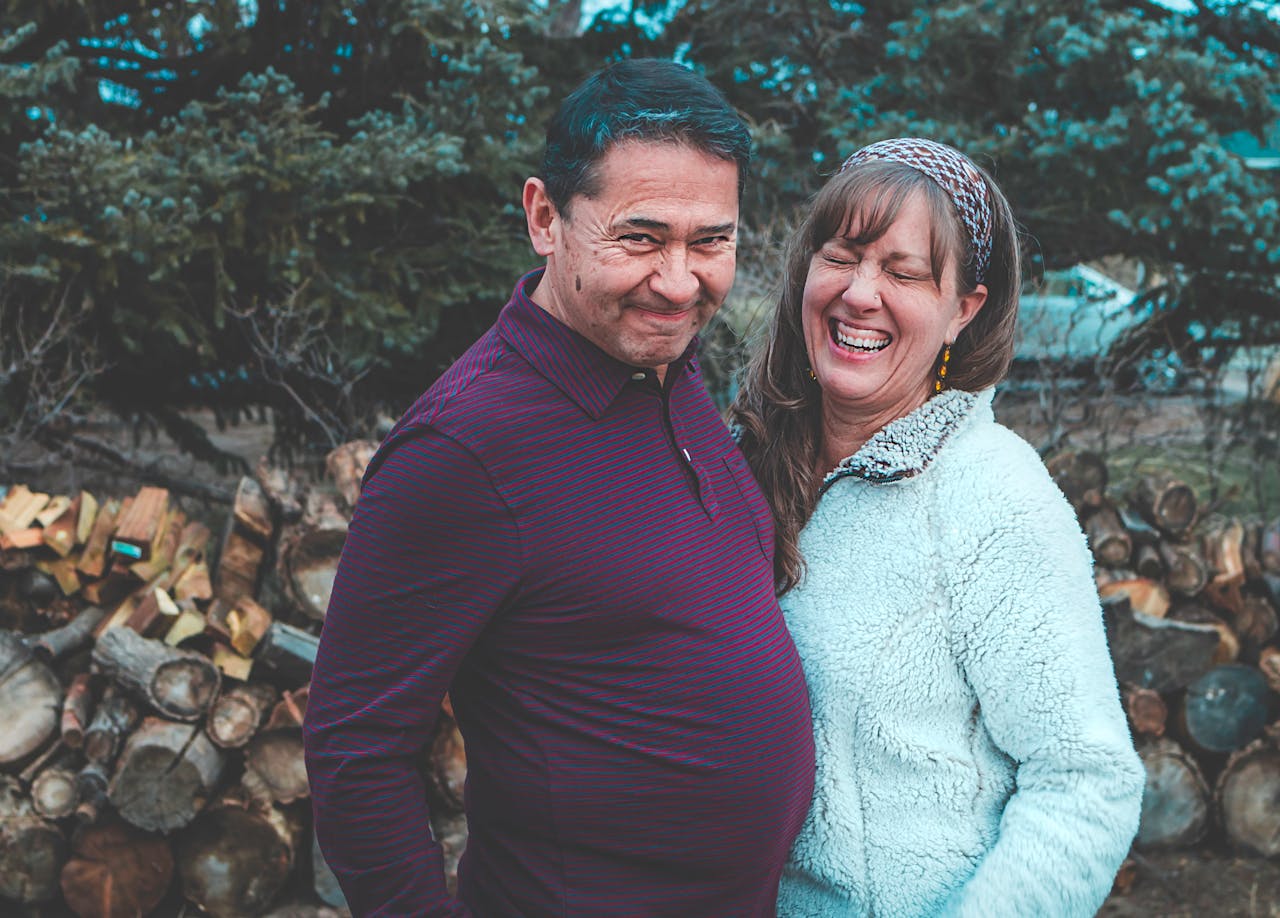Disclaimer: This post may contain affiliate links, which means I may receive a commission, at no extra cost to you, if you make a purchase through a link. Please see my full disclosure for further information. I only recommend products or services that I believe will add value to my readers. Thank you for your support! 😊
When you think of an “open marriage,” your mind may be filled with ideas of wild, carefree love or complicated relationship dynamics.
However, in the context of Ethical Non-Monogamy (ENM), an open marriage can be a thoughtful, intentional relationship structure.
It’s a marriage where both partners agree to allow sexual or romantic connections outside of their union, under clear, mutually agreed-upon guidelines.
Open marriages are rooted in communication, trust, and mutual respect.
If you’re considering this dynamic or just curious about what it means, this post will explore everything you need to know, including how open marriages work, the benefits, and the challenges involved.
Key Takeaways
- Clear and open communication is essential in an open marriage to navigate desires, expectations, and emotions without misunderstandings.
- Setting clear boundaries helps ensure both partners feel respected and secure in the relationship, creating a healthy balance between freedom and commitment.
- Jealousy is natural in any relationship, but with mutual understanding and trust, it can be managed, fostering emotional growth and connection.
What is an Open Marriage?
An open marriage refers to a marriage where both partners agree to have romantic and/or sexual relationships with others, outside of their primary union.
This agreement is made openly and with the full consent of both parties, and it’s based on trust, honesty, and mutual respect.
In an open marriage, there’s no assumption of monogamy; instead, there’s an understanding that both partners are free to explore their desires in a way that feels fulfilling, without jeopardizing their emotional connection.
The rules and boundaries of an open marriage can vary widely between couples, which means there’s no single template for what it looks like.
Some couples may allow casual sexual encounters, while others may encourage emotional connections and romantic relationships with others.
The key to making it work is the creation of clear boundaries and ongoing communication.
An open marriage isn’t about hiding things or having secret relationships—it’s about being upfront and transparent with your partner.
It’s about creating a dynamic where both partners feel safe and valued, even when relationships outside the marriage are explored.

The Benefits of an Open Marriage
Open marriages come with many potential benefits that attract couples to try this arrangement.
The structure can offer emotional, physical, and even psychological rewards when done with care and consideration.
Here are some of the most common benefits:
Increased Communication
In an open marriage, communication isn’t just important—it’s essential.
For any open relationship to thrive, both partners need to engage in ongoing, open, and honest conversations.
This means not only talking about your feelings, but also being vulnerable, sharing fears, desires, and expectations.
Regular communication helps couples to stay connected and ensures that both partners feel seen, heard, and supported.
When communication is strong, trust grows, which is crucial when navigating relationships outside the primary bond.
Personal Growth
One of the profound benefits of an open marriage is the personal growth that often comes with it.
By allowing each partner to explore new connections, whether sexual or romantic, both individuals have opportunities for self-discovery and expansion.
This growth can lead to deeper self-awareness about what each person desires, and it often brings new energy into the relationship.
Exploring different dynamics with others can reveal aspects of your personality or desires that you may not have fully understood before.
This means that an open marriage can allow both individuals to explore who they are outside of the constraints of traditional monogamy.
Less Pressure on One Partner
In many monogamous relationships, there’s an unspoken expectation that one partner must meet all of the other’s needs—emotional, intellectual, physical, and even spiritual.
This can be incredibly overwhelming and may lead to resentment or emotional burnout.
With an open marriage, each partner has the freedom to seek out relationships with others, alleviating the pressure to be everything for one person.
This doesn’t mean that one partner is “replacing” the other—it means that there is room for new experiences that allow the primary bond to remain strong while satisfying needs in other ways.
Stronger Relationship Bonds
Although it may seem counterintuitive, an open marriage can actually strengthen the relationship between the two primary partners.
The act of opening up a marriage forces couples to work harder on their communication, boundaries, and emotional connection.
When partners feel like they can be authentic with one another, without fear of judgment or rejection, it can deepen their emotional bond.
In a way, the freedom within the marriage leads to a stronger sense of security because both individuals feel like they are choosing to stay committed, not feeling forced or confined.
Trust, transparency, and vulnerability are key to maintaining that sense of safety and intimacy.

How Does an Open Marriage Work?
There’s no universal blueprint for how an open marriage functions, as each relationship is unique.
However, there are a few key components that are generally consistent across most open marriages.
These components are centered around communication, boundaries, and trust.
Here’s a breakdown of how an open marriage works:
Clear Communication
Communication is the foundation of any successful open marriage.
It requires vulnerability, transparency, and the willingness to listen as much as speak.
Both partners must be open about their needs, desires, and insecurities—this goes beyond just discussing logistics.
Checking in with each other regularly helps to address any concerns before they snowball into bigger issues.
Without clear communication, misunderstandings can quickly arise, which may threaten the stability of the marriage.
Boundaries and Agreements
Establishing clear boundaries is essential in any open marriage.
Boundaries create a safe space where both individuals feel respected, heard, and free to express themselves.
These boundaries could include sexual activities, emotional connections, time spent with others, and levels of disclosure.
Some couples might be comfortable with only physical encounters, while others may have emotional relationships with other partners as well.
It’s important that these boundaries are negotiated and revisited periodically to ensure they are still mutually agreed upon.
Both partners need to be comfortable with the rules, and if anything changes, there should be room for flexibility.
Trust and Respect
Trust and respect form the cornerstone of any open marriage.
Without trust, it’s almost impossible to maintain an open marriage without feelings of insecurity, fear, or betrayal.
This means respecting the boundaries set by your partner and also being honest when something feels uncomfortable or wrong.
Regularly affirming each other’s importance and commitment helps maintain a solid bond, even when there are external relationships involved.
By demonstrating respect and trust, both partners can feel secure knowing that the marriage is still a priority, despite external relationships.
Compersion
One of the more complex emotions that comes into play in open marriages is compersion—a feeling of joy when seeing your partner happy with someone else.
While this may sound difficult to comprehend, many open-marriage couples actively cultivate compersion.
Rather than feeling jealous, compersion allows you to embrace your partner’s joy and feel happy for them as they explore relationships with others.
This mindset takes time and emotional maturity but can be incredibly rewarding in building a strong relationship.
Compersion can actually enhance intimacy, fostering deeper emotional connections between partners.

Challenges of an Open Marriage
Though an open marriage can be highly fulfilling, there are challenges that can arise along the way.
No relationship—whether monogamous or not—is without its hurdles, and open marriages are no exception.
However, by approaching these challenges with patience and communication, couples can often grow stronger.
Here are a few of the common challenges couples may face:
Jealousy
Jealousy is often one of the first emotions that comes up when considering an open marriage.
It’s natural for humans to feel threatened by the idea of their partner being with someone else, but it’s important to approach jealousy with curiosity rather than guilt.
Understanding the root cause of your jealousy and discussing it openly with your partner is key to moving past it.
Practicing compersion, and engaging in deep, honest conversations can help overcome feelings of insecurity.
Boundary Crossings
It can be difficult to keep track of what’s allowed and what isn’t in an open marriage, especially as emotions and circumstances evolve.
Without clear boundaries, there’s a risk that one partner might overstep and violate the other’s trust.
Regular check-ins and setting firm boundaries around honesty and respect can help mitigate this issue.
If a boundary is crossed, it’s important to address it immediately, with compassion and understanding, to prevent resentment from building up.
Emotional Complexity
As emotional connections with other partners develop, it’s not uncommon for feelings of guilt, confusion, or fear to arise.
Managing multiple emotional bonds while keeping the primary relationship strong can be overwhelming, especially if one partner feels more emotionally invested in someone else.
This emotional complexity requires continuous self-reflection and open conversations about feelings and expectations.
Handling these emotions in a mature way ensures that the primary relationship remains stable and healthy.
Time Management
An open marriage often means managing multiple relationships, which can sometimes lead to time management issues.
Trying to juggle time with your primary partner, additional romantic or sexual partners, family, and work can become overwhelming.
Being intentional with your time and setting realistic expectations helps prevent stress and burnout.
Clear scheduling and ongoing communication about time constraints can reduce conflict and help maintain balance.
Is Open Marriage Right for You?
Determining whether an open marriage is right for you and your partner involves deep self-reflection and a mutual understanding of your needs and desires.
There’s no one-size-fits-all approach to relationships, so it’s important to be honest with yourself and your partner about what you want.
If you decide to explore an open marriage, ensure that you have the tools—communication skills, emotional maturity, and trust—to navigate the complexities.
If you’re not sure whether an open marriage is right for you, take the time to reflect on your feelings, and discuss it with your partner.
Remember, there’s no rush, and it’s okay to change your mind or reconsider your boundaries along the way.
The key is to approach the conversation with openness, honesty, and a willingness to evolve together.
Support and Resources
When you’re considering entering into a polyamorous relationship, you’ll need to leverage the right support and resources to ensure a positive and healthful journey.
This includes tapping into the polyamorous community, addressing mental health considerations, and finding professional guidance tailored to polyamory.
Engaging with the Polyamorous Community
Joining a vibrant polyamorous community is central to finding support and resources. Platforms like Meetup offer a variety of groups where you can connect with others who practice polyamory.
Online dating apps like Feeld, OkCupid, and Bumble cater to those seeking consensual non-monogamous relationships and can also serve as communities where you can learn and share experiences.
Polyamory and Mental Health
Maintaining your mental health is crucial when navigating polyamorous relationships. Dealing with complex emotions and dynamics means addressing your well-being.
Investing in books, podcasts, and online forums dedicated to polyamory can provide insights and strategies to maintain a healthy mindset and manage sexual relationships.
Books:
- The Ethical Slut: This classic text articulates the principles and practices of non-monogamy, providing a comprehensive guide for those looking to explore polyamory.
- More Than Two: A thorough exploration of the ethical and emotional complexities of polyamorous relationships, aimed at fostering healthy dynamics.
Finding Professional Support
Not all therapists are versed in polyamory, which is why it’s important to seek out a therapist or counselor who specializes in non-traditional relationship structures.
Resources like the Psychology Today therapist finder can help you find professionals experienced in polyamorous dynamics who can offer personalized advice and support.

Final Thoughts
Open marriages are not for everyone, but for those who choose them, they can offer freedom, personal growth, and the opportunity to explore desires in a fulfilling and consensual way.
It’s important to approach an open marriage with trust, communication, and clarity, ensuring that both partners are on the same page and feel respected.
By doing so, you can create a relationship that is authentic, healthy, and enriched by the experiences you share—both inside and outside your marriage.
FAQ on How to Get into a Poly Relationship
The following questions cover essential aspects of entering and navigating polyamorous relationships, tailored to inform and guide you through various facets of polyamory.
What are the different types of polyamorous relationships?
Polyamorous relationships can vary widely, but common types of polyamory include hierarchical polyamory, where primary and secondary relationships exist, and non-hierarchical or egalitarian polyamory, which does not assign priority levels to relationships.
What are some considerations for first-timers in a polyamorous relationship?
If you’re new to polyamory, consider your boundaries and communication comfort levels. It’s vital to understand and articulate your needs and desires while respecting your partners’ limits and expectations.
How can one discuss the possibility of a polyamorous relationship with their current partner?
Bring up polyamory with sensitivity and open-mindedness. It’s crucial to address the topic honestly and directly, discussing potential changes in the relationship dynamic and how you might navigate them together.
What are some ways to navigate the challenges of sexual dynamics in a polyamorous relationship?
Navigating sexual dynamics often requires ongoing conversations about desires, consent, and sexual health. Acknowledge and work through feelings of jealousy or insecurity as they arise, fostering a sense of security through transparency and reassurance.
How can I tell if a polyamorous lifestyle is the right fit for me?
Reflect on your ability to engage in open, honest communication and consider your emotional responses to sharing your partner with others. Assessing your readiness to face the complex emotional and logistical components of polyamory is essential.
Can polyamorous relationships be as healthy and fulfilling as monogamous ones?
Yes, polyamorous relationships can be just as satisfying and fulfilling as monogamous ones when based on mutual consent, strong communication, and respect. The health of a relationship is more about the interactions and respect among the individuals involved than the relationship style.

Anna is an anthropologist with a passion for Ethical Non-Monogamy (ENM) and gender and sexuality studies. Through ENM Living, she shares research-based insights and informative content to help others explore and navigate alternative relationship models. Anna is dedicated to creating an inclusive space that celebrates love in all its forms and supports those navigating the complexities of ENM.





